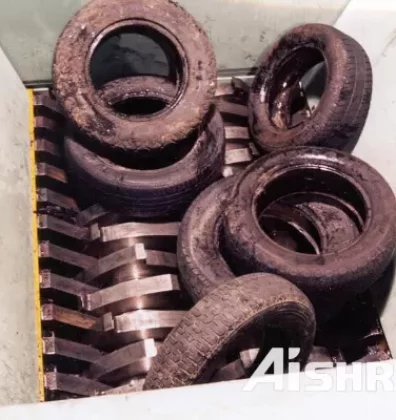Alternative fuel RDF(refuse derived fuel) or solid secondary fuel is a fuel obtained from waste. RDF contains high-calorie waste components such as plastic, paper, cardboard, textiles, rubber, leather, wood, etc.
RDF can be used as main or supplementary fuel in furnaces of cement plants, thermal power plants, metallurgical furnaces. The calculations performed showed the expediency of replacing gas or coal with RDF in the production of cement.

The production of cement requires significant energy costs due to the need to maintain the temperature in cement kilns above 2000°C. For each ton of cement produced, typically 60-130 kg of fuel oil, or its equivalent (natural gas, coal), and about 105 kWh of electricity are required. On average, energy, fuel and electricity costs account for up to 40 percent of cement manufacturing costs. Therefore, it is advisable to use alternative fuels obtained from waste in production processes in order to reduce the use of traditional fuels and raw materials by replacing them with alternative fuels.
How RDF is Produced?
As the name suggests, RDF comes from various kinds wastes, usually municipal solid waste or industrial and commercial waste. First, all collected waste is sorted. Such secondary raw materials as waste paper, cullet, plastic and metal are recycled. Organics - plants or food leftovers - are sent for composting or to a landfill, where, after burial, biogas is obtained from it. All other types of waste, are raw materials for the future RDF fuel.
Further, this mass is shreded, after which it is pressed into briquettes or granules - RDF fuel is ready.
Toxic, non-recyclable and hazardous waste can get into the feedstock for RDF fuel.
How Much does a RDF Plant Cost?
Unsurprisingly, when specifying the requirements of a new RDF Plant, ‘price’ almost always appears on the ‘hit list’. And rightly so – very few companies have the luxury of money being no object.

This begs the question – how much does a RDF Plant cost?
First thing's first, the ‘price tag’ on RDF Plant is going to be very different to that Consumer Goods. When we talk about a RDF Plant, we're referring to a system capable of tackling an array of materials to achieve what are typically very specific objectives.
Secondly, we have already explained how RDF is produced, maybe you have learned that different waste streams use different equipment, which leads to the difference of each RDF Plant.
Some customers like to break down such figures, so it's also worth outlining there are no two identical leaves in the world. Even for the same project, the solutions used by different manufacturers, equipment grades, etc. will cause the quotation of RDF Plant to be very different.
In addition, there are hidden costs under the ‘iceberg‘ that must be paid attention to.
For example:
- Ongoing fuel consumption and energy efficiency – how much will it cost to run the RDF Plant?
- Wear costs include the cost of servicing and maintenance, spare and wear parts and unplanned downtime if the plant isn’t known for its reliability.
- The expected useful life of the technology.
In summary, price is always going to be an emotive subject. You can always find a unit that is cheaper to start with. But if it breaks down frequently – stopping your production line – it's costing you money. GEP ECOTECH will work with your budget to build a RDF Plant solution that is the best fit for your business model.
If you're not sure of the best procurement route for you, talk to us and we'd be happy to walk you through the various options – whether you intend to be an GEP ECOTECH customer or not.
Learn about GEP ECOTECH solution for solid waste.





